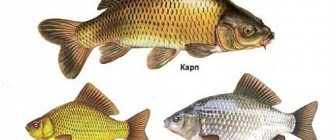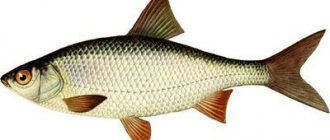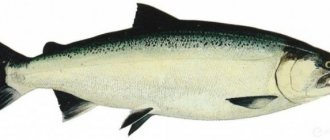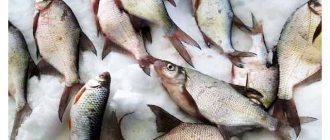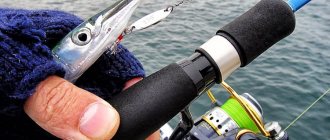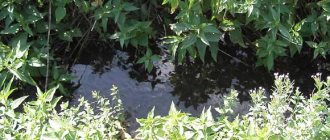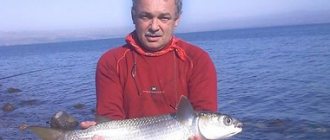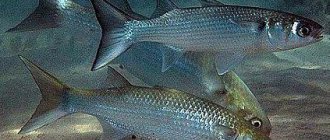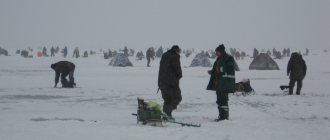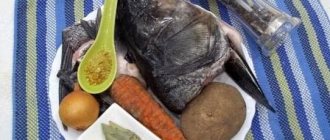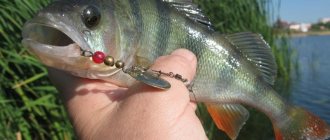Pelengas, as a representative of the mullet family, is better known to residents of the European part of Russia. Even the ancient Greeks caught its ancestors in the Mediterranean, Aegean, Black and Marmara seas.
Since the 90s of the twentieth century, pelengas has been an object of industrial fishing, loved and revered by amateur fishermen and aesthetes of fish cuisine. Surprisingly, this fish has several names: pelengas, pilengas, pelingas, etc. Let’s take a closer look at what this fish is.
General description of bearings
Pelengas is externally similar to its ancestor - the Black Sea mullet, although its homeland is the Sea of Japan, as well as the waters of Southeast Asia. At the end of the last century, having traveled thousands of miles, he arrived in the Sea of Azov as a scientific experiment. The main goals of ichthyologists then were:
- Replenishment of fish stocks.
- Improving the bottom state of the southern seas.
The attempt was successful. The new place of residence had a beneficial effect on all life processes of the pelengas, its biology and physiology. The Azov Sea also experienced a significant improvement.
Differences from mullet
A common distinguishing feature of the mullet family from most representatives of the fish world is the absence of a midline on the sides. Pilengas has larger scales, unlike the ancestor of the species, and an orange cornea of the eyes, while the Black Sea mullet can be called blue-eyed. The eastern guest is much larger than its Black Sea and Mediterranean relatives.
The standard dimensions of the bearing are 60−70 cm in length and 2.5−3 kilograms in weight. But there are facts of catching truly trophy specimens weighing more than ten kilograms and up to one and a half meters in length. The body of this fish is spindle-shaped, the tail is strong with active plumage. There are two fins on the back - central (high) and tail (low).
What does it eat?
The basis of the pelengas diet is:
- Nereis worm.
- Bottom plankton.
- Sediments in the form of decomposed organic matter.
For reference
Nereis belongs to the order of sea worms. Habitat: silt deposits of sea shallows. Color - from red to green. Delicate in consistency.
The “Eastern Guest” is often called the orderly of reservoirs. The mild climate with an abundance of food was beneficial for the rapid acclimatization of the fish. Now the sawfish is a full-fledged inhabitant of the Azov and Black Seas.
Habitats
As in his historical homeland, the pelengas did not change his habits in the new place. It spends the main part of its life at sea, and moves to river mouths to spawn. At the same time, he is able to move along them against the current for tens of kilometers. Thanks to this ability, debates continue to this day about whether the sea or river fish is pelengas. The “half-sailor-half-river fish” does not mind spawning in the shallow waters of sea bays (estuaries).
Pelengas is a weather-dependent fish. At low pressure and in bad weather, it flocks into schools and completely loses interest in searching for food, but when the sea calms down or the temperature rises to 16-18 degrees, the time comes for the fish to feed, and the life activity of the pelengas increases significantly.
Seas
It was noted that during spawning, sawfish migrate from the Sea of Azov to the Black Sea, which has a positive effect on replenishing commercial stocks of the “bluest fish in the world.” It has already become an obvious fact that the pelengas is expanding the halo of its habitat. Currently, it is actively caught in the Marmara and Aegean Seas. Off the Turkish coast, fans of fishing for pelengas and mullet call it “Russian mullet.” In recent years, a migrant from the East has reached the Mediterranean Sea and was even spotted entering the Atlantic Ocean.
Rivers
Pelengas is surprisingly livable in both fresh and sea water. He likes to winter in the Don, Kuban, Dnieper, and Danube in late autumn. The return (to the usual habitat of the pelengas) occurs after the ice melts or the onset of constant positive temperatures.
Fishing methods
The exterior and habits of the fish are similar to its closest relative, the mullet, the difference being the weight and growth rate.
Angling takes place from the shore using long spinning rods equipped with a powerful multiplier or an inertia-free reel. Local lovers know what pelengas are, because fishing on the coast is an exciting activity, during which you can not only enjoy the seascape, but also catch dinner. Peak fishing activity occurs in autumn. The equipment may look different, but there is a classic installation. It includes the following elements:
- Lead material (line with a diameter of 0.25-0.3 mm).
- Hooks No. 8-10 according to the international classification (5-6 according to the Russian table).
- Polystyrene foam (clings to the hook or in the middle of the leash, this is done to suspend the bait in the water, so the bait is more noticeable).
- A sinker, the weight of which is selected in relation to the test of the rod.
The distance between the leads must be at least 20 cm. The diameter of the main line used is an order of magnitude thicker. Thus, in the event of a break, the leash breaks and a larger amount of monofilament is preserved.
The favorite delicacy of the pelengas, the Nereis worm, is used as a bait. You can get it in the upper layers of silt of estuaries or buy it at a fishing store. In addition to the favorite bait, they use a red earthworm, sandstone, maggot and even canned corn. The fish move in large schools, so when one bite occurs, others immediately follow. The average weight of prey ranges from one to two kilograms; larger specimens are rare.
To learn more:
Description of the trout fish - how is it useful?
Daily activity appears at dawn and subsides closer to 10 o'clock. During the day, the fish makes itself known with rare catches, and resumes its interest in the bait after sunset.
In a strong wind that drives the waves, you shouldn’t go fishing: pelengas, both Black Sea and Azov, are excellently caught when there is a calm, but a storm makes them fall into a stupor.
As the weather gets colder, the schools move to deeper places, and the appetite of marine life gradually subsides. Fishing in October and November is carried out mainly from a boat. Pelengas is a strong trophy, and the time of fishing depends on what kind of fish is hooked. When fishing on shore, carp rods are used. You can take an onboard fishing rod with a carp rig with you into the boat. In addition to traditional gear, spearfishing with a gun also takes place. Divers do not use oxygen tanks as this type of activity is prohibited.
Spawning
The forced relocation of the pelengas from the East to the West led to a change in its biology. The earlier sexual maturity of males (at 2-3 years) and females (at 3-4 years) caused an acceleration in the growth rate of the fish population. At the same time, in the Black and Azov Seas, it produces up to 2.4 million eggs versus 1.7 million, which was the norm during its life in the Seas of Japan and South China. Thanks to the climate in the new place, the caviar itself began to develop faster than in the Far East.
In terms of timing, the spawning period lasts from early May to mid-June, but depending on the water temperature it can extend until mid-summer.
Where does it live (sea or river)
The birthplace of the pelengas is the Sea of Japan, although the ancient Greeks caught its ancestors in the Marmara, Aegean, and Mediterranean seas.
Since the mid-twentieth century, stocks of flounder, sturgeon and many other fish that lived in the Black and Azov Seas began to decline rapidly. They were replaced by the unpretentious pelengas, capable of quickly and easily adapting to new, unusual living conditions. Acclimatization was so successful that individuals began to reproduce here. Today it is a full-fledged commercial species.
Pelengas are found in open reservoirs, bays, and estuaries. They live in large flocks. In winter, to wait out the cold, they swim into the deep sections of the Danube, Dnieper, and Don rivers. In spring, the water temperature rises and they return to the sea again.
Regardless of the season, the presence of pelengas individuals in a reservoir only brings benefits. They are called biological reclamation agents, as they clean the underwater soil of organic remains. Favorite food is small invertebrates, worms, dendrites - semi-decomposed, dead, mineralized parts of plants and marine life. Thanks to this method of feeding, Pilengas has virtually no competition in the Azov and Black Sea territories.
Ichthyologists claim that bilengas is a euryhaline fish species that feels equally good in sea and fresh (river) waters. This feature and nutritional value make it possible to widely breed it in artificial ponds, replenishing local markets with fish stocks.
Depending on their habitat, the following species are distinguished:
- Azov or Don;
- Far Eastern;
- Black Sea or Kuban.
Reproduction
Pelengas is called river mullet because it likes to spawn in desalinated areas of the sea coastal zone. Spawning (from May to June) can be seen with the naked eye, as the water is literally seething. Males reach sexual maturity at the age of 2-4 years, females a little later. Caviar is deposited in large quantities. Its maturation occurs in the upper layers of water. Larvae and young live in shallow waters, at river mouths. Older individuals are found in the central and western parts of the Azov Sea.
The benefits and harms of bearings
Throughout its life cycle, pelengas performs the most important function - cleaning the bottom space of reservoirs from biological silt. This is a significant help to nature in cleaning rivers, coastal shallows of seas and their bays.
The culinary qualities of pelingas are a godsend for aesthetes and gourmets of sea food. Just imagine, 20% of it consists of pure and easily digestible protein. Pelingas is a champion in the content of Omega-3 acids and is close to the champion in the presence of minerals such as potassium, phosphorus, iron and calcium. At the same time, the Black Sea pelengas belongs to dietary products. So, 100 grams of its meat contains only a little over 80 calories. For clarity, here is a comparison table:
Seafood | Protein content | Fat content | Calories per 100 grams |
| Pelingas | 20 | 4,3 | 84 |
| Carp | 18 | 11 | 200 |
| Zander | 19 | 1,3 | 104 |
| Hake | 14 | 1,4 | 110 |
| Pike | 18 | 0,8 | 94 |
| Herring | 16 | 10 | 160 |
Pelengas meat has not only beneficial properties, but also the presence of a minimum of bones. It is tasty, has a pleasant white color, which encourages cooks to be creative in their recipes.
Composition and calorie content
It was previously noted that 1/5 of fish consists of protein. It is completely absorbed by the human body. In summer, fish meat contains a high concentration of fat, its level reaches 8 percent. The fatty acid content is 32 percent in summer and 17 percent in winter.
The meat is famous for the presence of retinol, as well as B vitamins. Magnesium, iron, phosphorus, calcium and potassium can be separated from the minerals of this product.
Due to its chemical composition, pelengas is one of the natural antioxidants. Its meat has a positive effect on the brain. The product also has a beneficial effect on the cardiovascular system. With regular use, people are protected from hypertension, atherosclerosis and cancer.
Speaking about the calorie content of this type of fish, it should be noted that it belongs to dietary products, since 100 g of fish fillet contains only 85 kilocalories.
